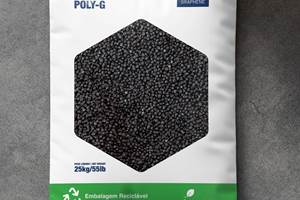Microcapsules Filled with Liquid Lubricants for Plastics Look Promising
German plastics research institutes’ project underway have developed self-lubricating plastics that achieve up to 85% less wear.
Microcapsules filled with liquid lubricants for plastics have been developed by the Potsdam Fraunhofer Institute for Applied Polymer Research IAP and the Plastics Center SKZ in Würzburg aimed at reducing friction which in plastics can also reduce microplastics in the environment and also lower energy consumption. These entities estimate that 23% of global energy consumption can be attributed to friction losses, which makes reduced friction components with an important contribution to conserving resources and achieving climate protection targets. The newly developed self-lubricating plastics reportedly achieve up to 85% less wear. As a result, this successful research project is being continued for two years.
Whether it's sliding doors, laminate, plastic gears or other moving components – there is a variety of applications where materials are subject to friction. Plastics manufacturers are therefore sometimes incorporating solid lubricants into plastics to reduce component wear. However, there are only a relatively small number of solid lubricants suitable for plastics processing. In contrast, there is a much wider range of liquid lubricants, some of which are more effective. In a cooperative effort, the two research institutes have succeeded in encapsulating liquid lubricants in such a way that they can be incorporated into polymers as functional substances and later develop all the advantages of a liquid lubricant in the component.

"We managed to incorporate Fraunhofer IAP‘s microcapsules filled with liquid lubricant into thermoplastics using a twin-screw extruder. The challenging task was to mix the microcapsules with thermoplastics under high temperatures without damaging the capsules. Only when friction occurs in the final component the capsules should break and release the lubricant. This allows the component to lubricate itself automatically. Our friction and wear tests showed a reduction in wear of up to 85 percent on plastic-steel pairings. Thus, components last significantly longer and generate less microplastic,” explains Moritz Grünewald, researcher in the Materials Development Group at the SKZ Plastics Center.
Based on these results, the material system is being optimized further for potential applications. The development is now focusing on improved mechanical and thermal properties of the self-lubricating plastics.
The additional use of reinforcing materials such as fibers is intended to make the self-lubricating plastics more mechanically stable. In the project, the researchers investigate, which type of fiber is best suited for this purpose and how the microcapsules can be optimally bonded to the plastic matrix. In addition, the capsules are also to be incorporated into higher-melting plastics in order to further widen the technical application possibilities. To this end, even more stable capsule wall materials are being developed in close cooperation between the project partners.
Explains Dr. Alexandra Latnikova, microencapsulation specialist at Fraunhofer IAP whose team develops the micorcapsule systems. "The main challenge is that the capsules should not break until they come into frictional contact in the final application. However, if we introduce additional fibers and increase the temperatures, the stresses on the capsules increases during the mixing process."
The project "Tribologically effective pseudo-solids for mechanically and thermally highly- loaded thermoplastic components" is funded by the German Federal Ministry for Economic Affairs and Energy via the German Federation of Industrial Research Associations AiF as part of the program for the promotion of joint industrial research IGF.
Numerous inquiries from industry highlight the need for novel plastics with optimized friction and wear properties. Microencapsulation technology has major advantages for companies in this regard: the wide range of liquid and advanced lubricants can now be used as internal lubricants with on-demand release properties. The project is accompanied by a committee that includes companies from all sectors of the plastics industry, lubricant manufacturers and microencapsulators. The project is open to further partners.
Related Content
Vibrantz Technologies’ Leadership Changes
Formerly Chromaflo and Ferro, Vibrantz announces shifts in leadership roles.
Read MoreGerdau Graphene Launches “First” Graphene-Enhanced PE Additive Masterbatch for Extruded Packaging and More
The company has also partnered with conglomerate Sumitomo Corp. for distribution of its graphene-enhanced masterbatches in Japan.
Read MoreMasterbatches Reduce Gloss in PLA and PETG 3D Printed Products
Insight Polymers & Compounding’s two low-gloss additive masterbatches shown to boost appearance of 3D printed objects.
Read MoreBASF to Purchase Pyrolysis Oil Produced From Waste Plastics
Agreement with Arcus Greencycling GMBH anticipates a volume of 100,000 ton/yr.
Read MoreRead Next
How Polymer Melts in Single-Screw Extruders
Understanding how polymer melts in a single-screw extruder could help you optimize your screw design to eliminate defect-causing solid polymer fragments.
Read MoreWhy (and What) You Need to Dry
Other than polyolefins, almost every other polymer exhibits some level of polarity and therefore can absorb a certain amount of moisture from the atmosphere. Here’s a look at some of these materials, and what needs to be done to dry them.
Read MorePeople 4.0 – How to Get Buy-In from Your Staff for Industry 4.0 Systems
Implementing a production monitoring system as the foundation of a ‘smart factory’ is about integrating people with new technology as much as it is about integrating machines and computers. Here are tips from a company that has gone through the process.
Read More








 (2).jpg;maxWidth=300;quality=90)

















